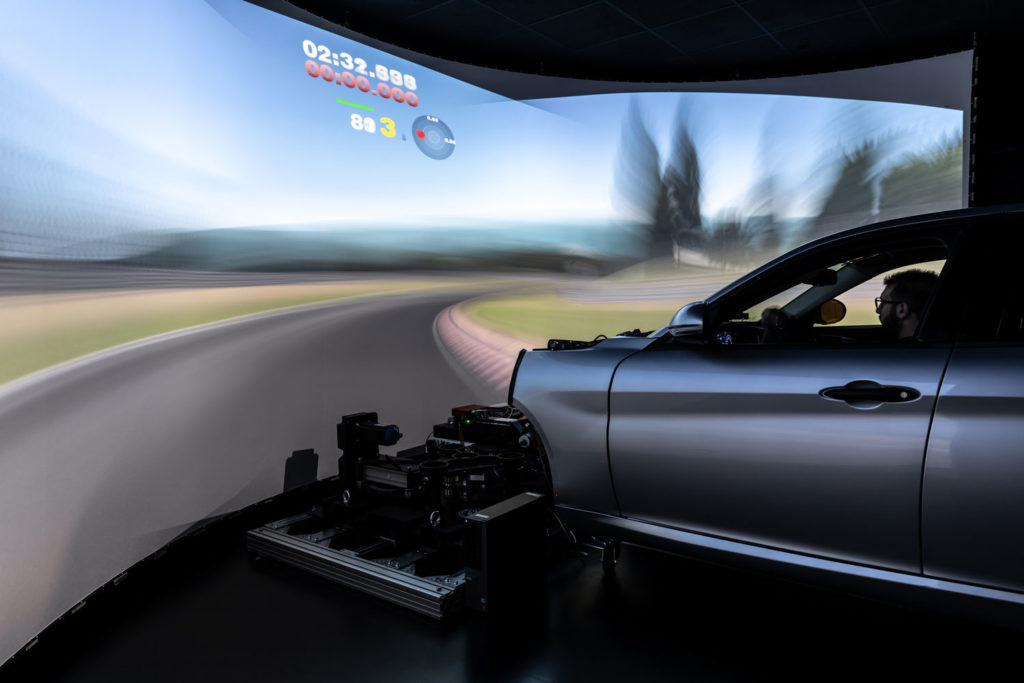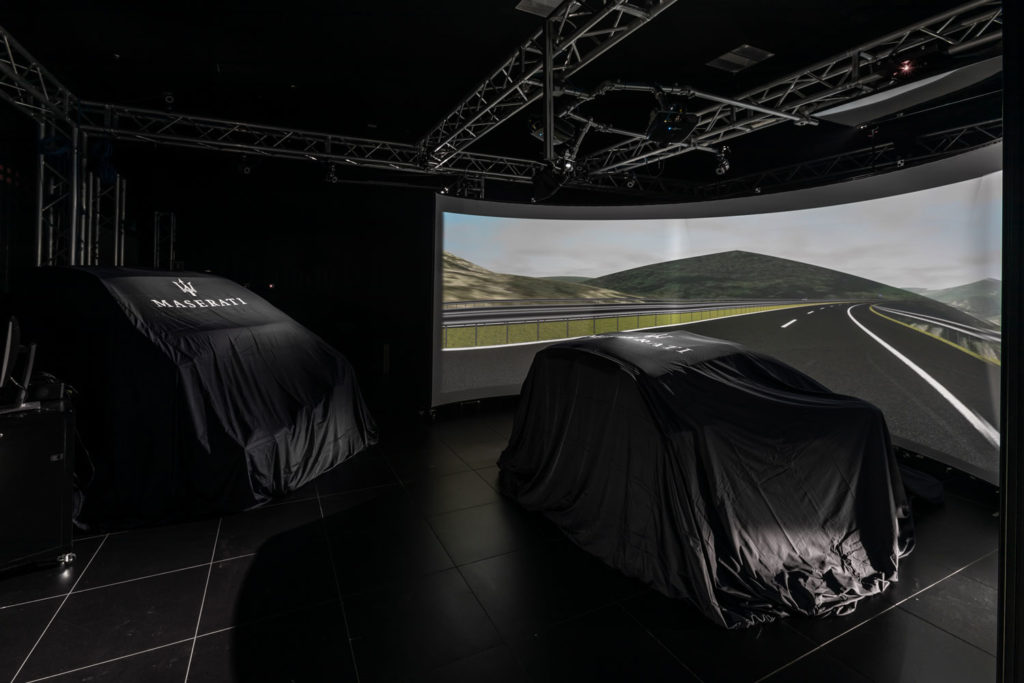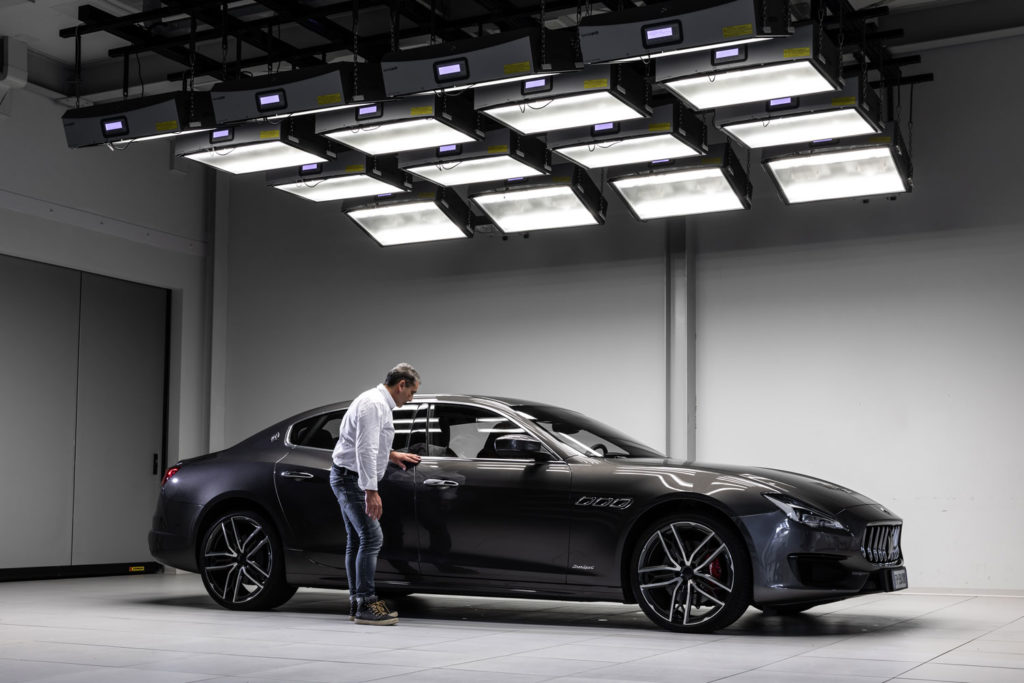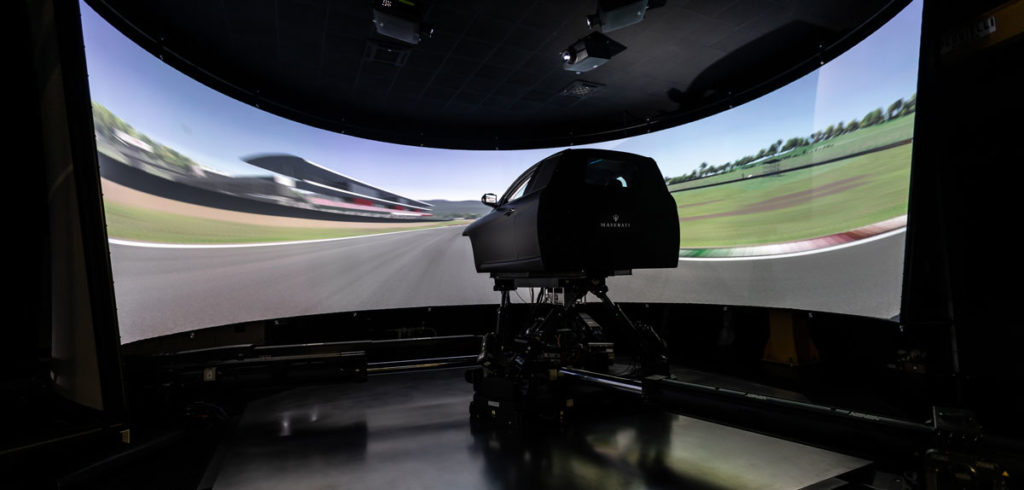Maserati has opened the doors to an exclusive and usually off-limits location: the Maserati Innovation Lab. The brand’s engineering hub, inaugurated in September 2015 and located on Via Emilia Ovest in Modena, is for the first time sharing with the outside world its fundamental role as the firm’s center of innovation, driver research technology, development and planning.
Here digital processes support product development, applying the exclusive Maserati formula which, by means of an integrated approach, prioritizes the human factor right from the initial phases. Concern with customer needs has been scrupulously incorporated into the virtual simulation process thanks to an exclusive mix of hardware and software.
The digital processes supporting product development take place in three major areas: the static simulator, the latest generation dynamic simulator featuring DiM (Driver-in-Motion) technology and the ‘User eXperience’ development labs.
The product development hub employs more than 1,500 technicians (divided across the Modena offices on Via Emilia Ovest, Viale Ciro Menotti, Via Delle Nazioni, and in the headquarters of Grugliasco and Balocco). The headquarters in Via Emilia Ovest covers a total area of 33,744m2 (of which 14,000m2 are covered and 19,744m2 uncovered).
More than 1,100 people are based there, the majority of which are engineers, representing 17 different countries. It’s a very young and dynamic workforce of an average age of around 37 years. Almost half of the employees are under 35 and 20% are under 30. The organization has grown considerably in recent years, attracting top graduates from the best Italian universities, including those that collaborate with Maserati.
 Static simulator
Static simulator
The static simulator is the starting point for every experience in the Maserati realm of simulation. The system is composed of a cockpit and three projectors and has a high computational power. It is a simple system that helps engineers, from the very initial phase of the development process, to obtain immediate feedback from the driver, and makes a major contribution to new model validation.
In particular, Maserati engineering ensures a driver-centred strategy even during virtual development, by creating a link between hardware-in-the-loop (HiL) methodology and the simulator. Using this approach, real sub-systems such as steering and braking, ABS and ESC can be added in, to create tests that connect physical and simulated components to provide a testbed for developing all the characteristics of a new vehicle. Last but not least, driver assist systems can be developed, trialled and validated in a safe environment by reproducing the complex scenarios which may arise anywhere in the world.
Dynamic simulator
The dynamic simulator at Modena is said to be the most modern and advanced example found in Europe, and supports the Maserati engineers in the development of all the new models. The dynamic simulator incorporates state-of-the-art technology and enables full exploitation of systems’ integration thanks to the evolution of proprietary control strategies, cutting development times and costs. It also helps to reduce the number of prototypes and ensures that the virtual sign-off is very close to the final product.
With various directions of movement, this tool creates a realistic driving experience, emulating in a virtual environment the driving dynamics of a car in the real world on a wide variety of road surfaces or contexts, including the world’s top international racing circuits.
The simulator makes it possible to test cars on various racetracks within one day. Modifications to the vehicle can be made with a few simple clicks and this greatly simplifies the analysis of the data gathered.
The majority of simulators utilize six actuators in order to offer six degrees-of-freedom. The dynamic simulator used at the Innovation Lab has nine actuators, which means it can utilize three degrees-of-freedom with the lower platform and six with the upper one. In this way it can offer in total nine degrees-of-freedom to accurately reproduce the driving characteristics of a car. This enables engineers to precisely analyze the dynamics of the car, in addition to driving performance and comfort, all on the same moving platform.
Another particularly interesting characteristic is a very thin cushion of air that makes the entire platform float over the pavement, enabling dynamic, silent and continuous movement thanks to the electric actuators.
This tried and tested technology is said to make it possible to achieve a 50% reduction in time-to-market for new cars, to carry out 90% of all development on the simulator and to reduce the use of physical prototypes by 40%.
The simulator can also be used to develop EVs too. Weight distribution and the location of the center of gravity have been effectively optimized due to the ability to test hundreds of different configurations, for example.
A centralized logic that guarantees all the car’s active contents and its electric traction has been developed, maximizing dynamic performances since the entire car provides an integrated reaction to all inputs from the driver. Particular attention has been focused on exploiting electric motors’ vast potential in terms of power and rapid response.
 The ‘User eXperience’ development labs
The ‘User eXperience’ development labs
These are fundamental in the design of the human-machine interfaces, one of the major challenges of the latest Maserati development projects.
The Maserati driver simulator hub includes a lab dedicated to vehicle ergonomics, enabling accurate reproduction of driving posture, visibility and interactions with the onboard controls and displays, and where the vehicle under development can be driven in any scenario with the utmost realism.
The integrated design of the user experience is aided by the effective, coherent visual, acoustic or haptic alerts in highly automated driving mode, from the level of distraction generated by the most frequent operations to the accessible layout of the controls, and full information in the different driving modes.
The ergonomics lab is completed by a set of sophisticated, specialized instrumentation to analyze the various issues that contribute to the user experience.
 Two examples: the skylight simulator, designed to reproduce lighting conditions at all times of day, at any point in the year and at any latitude. Here there is an in-depth focus on reflection problems, to avoid disturbance at the wheel while still providing solutions with attractive shapes, materials, finishes and colors. And, the psycho-acoustics lab, where the soundtrack of future Maseratis is developed: the acoustics of the controls, the audio alerts, the driver assist systems and much more.
Two examples: the skylight simulator, designed to reproduce lighting conditions at all times of day, at any point in the year and at any latitude. Here there is an in-depth focus on reflection problems, to avoid disturbance at the wheel while still providing solutions with attractive shapes, materials, finishes and colors. And, the psycho-acoustics lab, where the soundtrack of future Maseratis is developed: the acoustics of the controls, the audio alerts, the driver assist systems and much more.
The ‘User eXperience’ development labs support the integrated development of ergonomics, the human-machine interface and the vehicle’s perceived quality for genuine ‘user-centered design’ dedicated to delivering the distinctive Maserati user experience.


